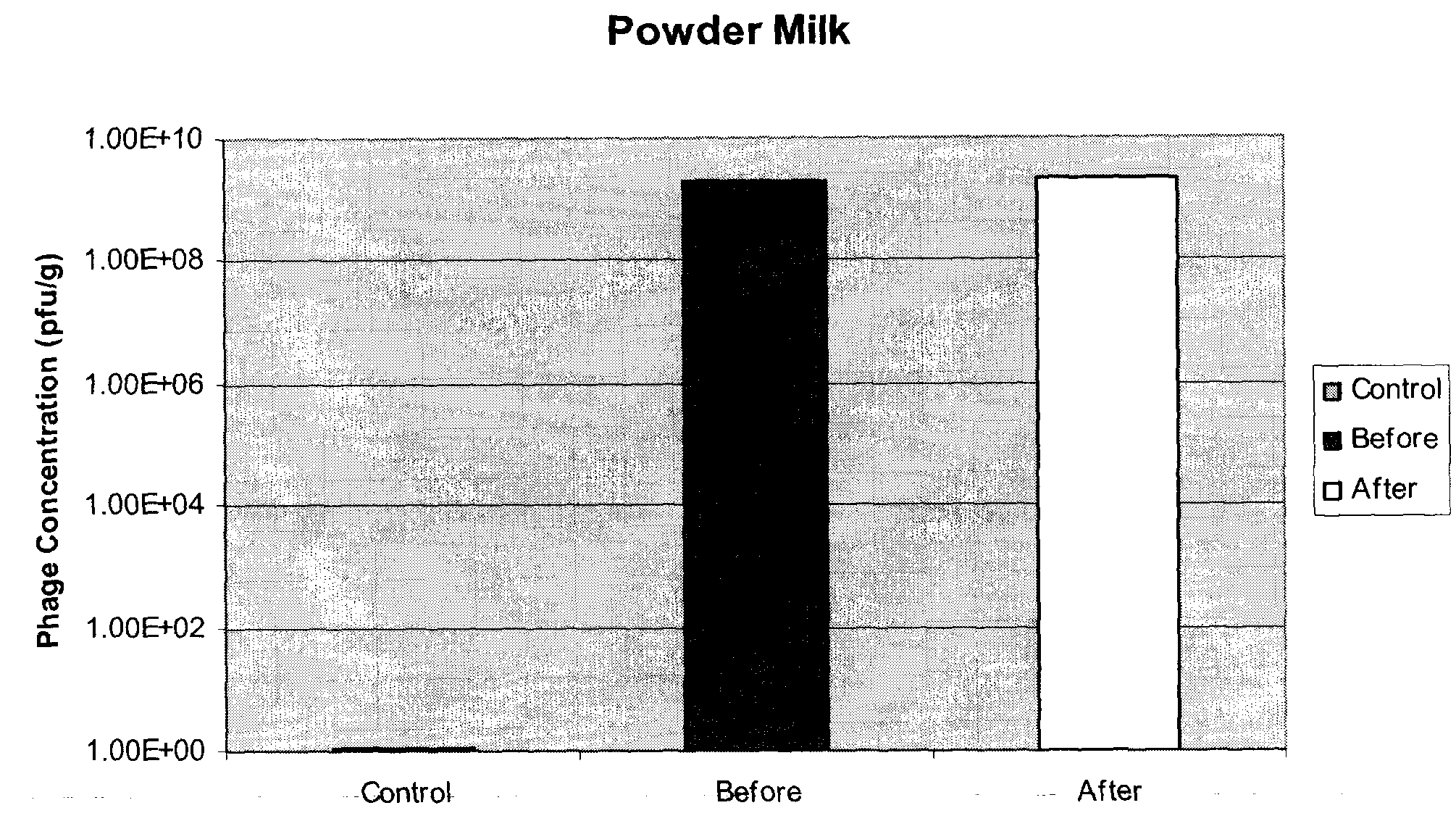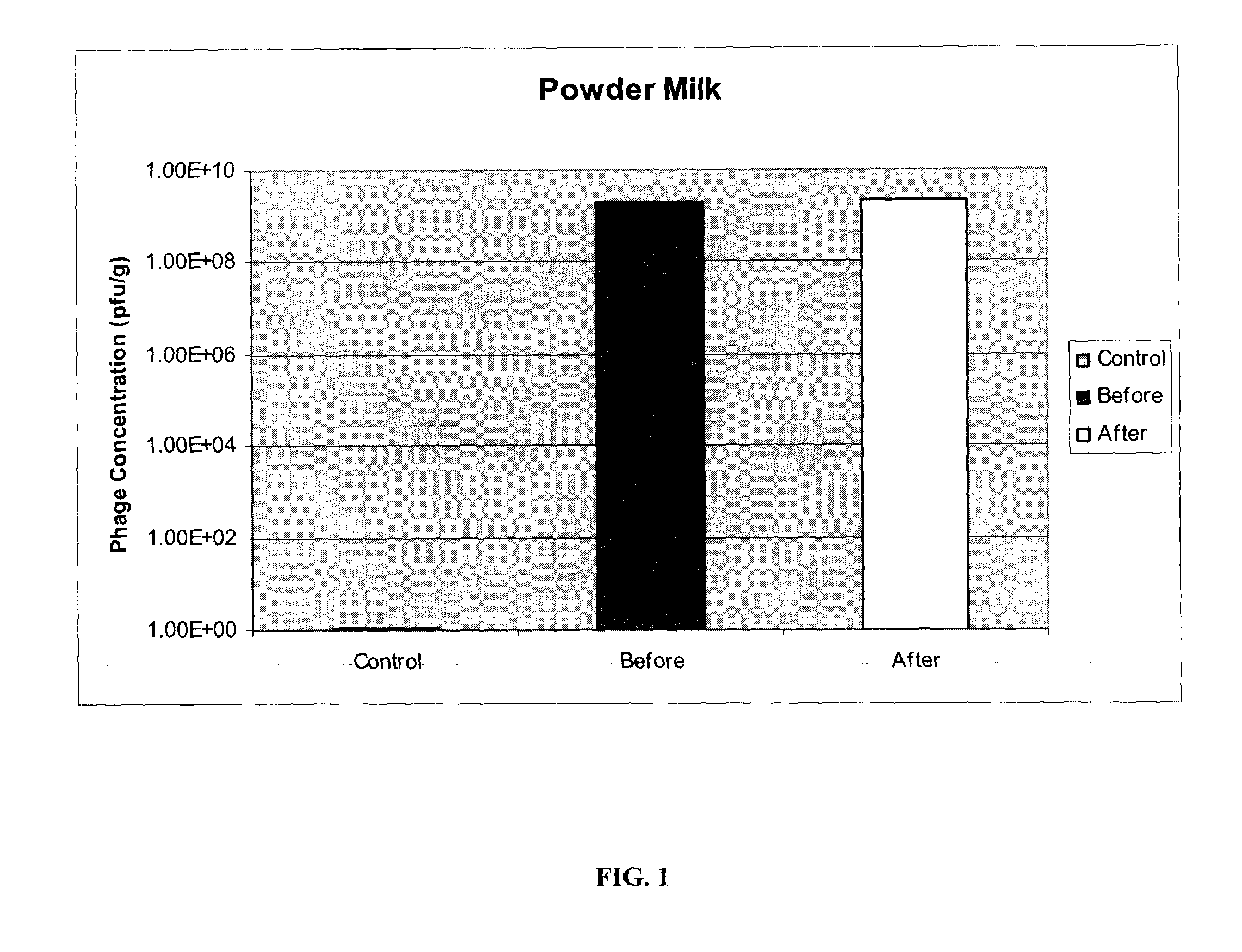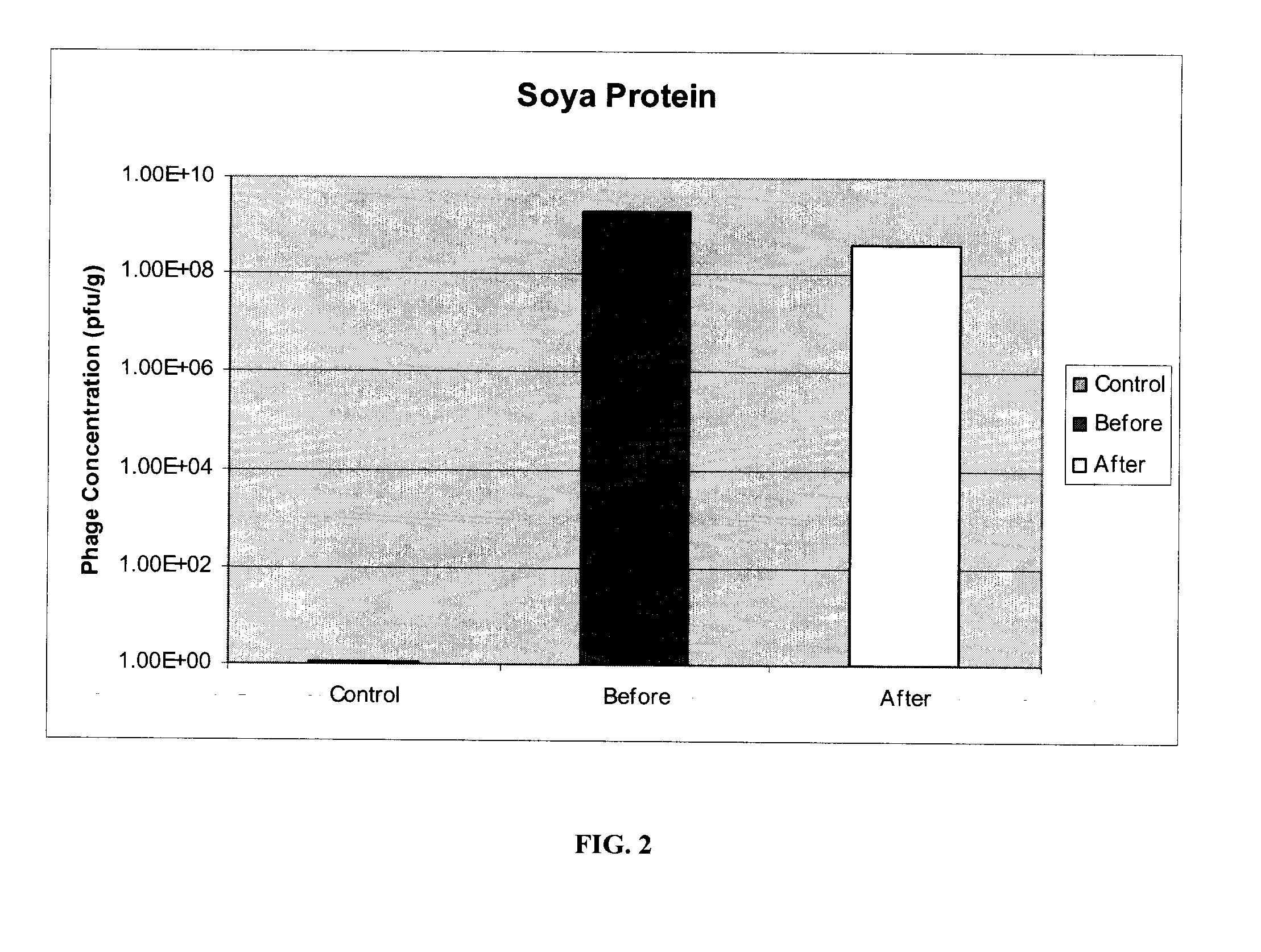Process for Treating Animal Waste
- Summary
- Abstract
- Description
- Claims
- Application Information
AI Technical Summary
Benefits of technology
Problems solved by technology
Method used
Image
Examples
example 1
Isolation, Amplification and Titration of Phase
[0068]Bacteriophages were isolated from manure samples obtained from dairy and beef farms across Canada. Manure samples were allowed to react with E. coli O157:H7 and plated onto agar plates. Any phage plaques obtained were isolated and purified as per standard phage purification protocols (Maniatis et al (1982) Molecular cloning: a laboratory manual, Cold Spring Harbor Laboratory, Cold Spring Harbor, N.Y.).
[0069]Purified phages isolated as outlined above were amplified using the isolation strain of E. coli O157:H7. Purified phage and bacteria were mixed together, let stand at room temperature for 10 minutes, and amplified according to standard protocols commonly used in the art (Maniatis et al (1982) Molecular cloning: a laboratory manual, Cold Spring Harbor Laboratory, Cold Spring Harbor, N.Y.). Amplified samples in LB broth were filter sterilized and used.
[0070]Concentrations of bacteriophage solutions were determined using standard ...
example 2
Immobilization of Phases
[0071]E. coli O157:H7 specific phages P10 and R4, prepared as described in example 1, were immobilized on two different matrices: powdered milk (fat free) and soya protein. Both milk powder (Carnation) and soya protein (Supro) were obtained off-the-shelf from local food stores. Identical protocols were used for both materials and for other phages.
[0072]50 g of powder (powdered milk or soya protein) was spread in a glass dish. Phages in solution were uniformly sprayed onto each powdered matrix. Varying titers of phages, ranging from 105 pfu / g to 109 pfu / g, were used with powdered milk, each yielding similar results. The phage-powder was mixed and dried at 37° C. for 2 hours, or until completely dried. The resulting bacteriophage composition was ground into a fine powder, with particle sizes in the range of 50-600 μm and an average particle size of 200 μm. 0.5 grams of each powdered bacteriophage composition was re-suspended in 10 ml of reverse-osmosis (RO) wat...
example 3
Encapsulation of Bacteriophage Compositions
[0075]Bacteriophage compositions were prepared as described in Example 2, and encapsulated generally as described in US publication 2003 / 0109025 (which is incorporated herein by reference), with some modifications to preserve the activity of the phages. Briefly, 400 g of immobilized phage and 1.2 kg of vegetable fatty acids were used for encapsulation. The maximum temperature attained by the encapsulated phage preparation was 39° C.
[0076]Once the coating operation was complete, the encapsulated immobilized phage particles were collected and stored in airtight containers. The average particle size was between 100 and 1000 μm.
[0077]The effect of encapsulation on the titer of bacteriophage compositions immobilized on milk powder was determined by determining the activity of the immobilized phage preparation before (“Before”, FIG. 3) and after (“After”, FIG. 3) encapsulation. For this analysis, encapsulated bacteriophages were re-suspended, and...
PUM
 Login to View More
Login to View More Abstract
Description
Claims
Application Information
 Login to View More
Login to View More - R&D
- Intellectual Property
- Life Sciences
- Materials
- Tech Scout
- Unparalleled Data Quality
- Higher Quality Content
- 60% Fewer Hallucinations
Browse by: Latest US Patents, China's latest patents, Technical Efficacy Thesaurus, Application Domain, Technology Topic, Popular Technical Reports.
© 2025 PatSnap. All rights reserved.Legal|Privacy policy|Modern Slavery Act Transparency Statement|Sitemap|About US| Contact US: help@patsnap.com



